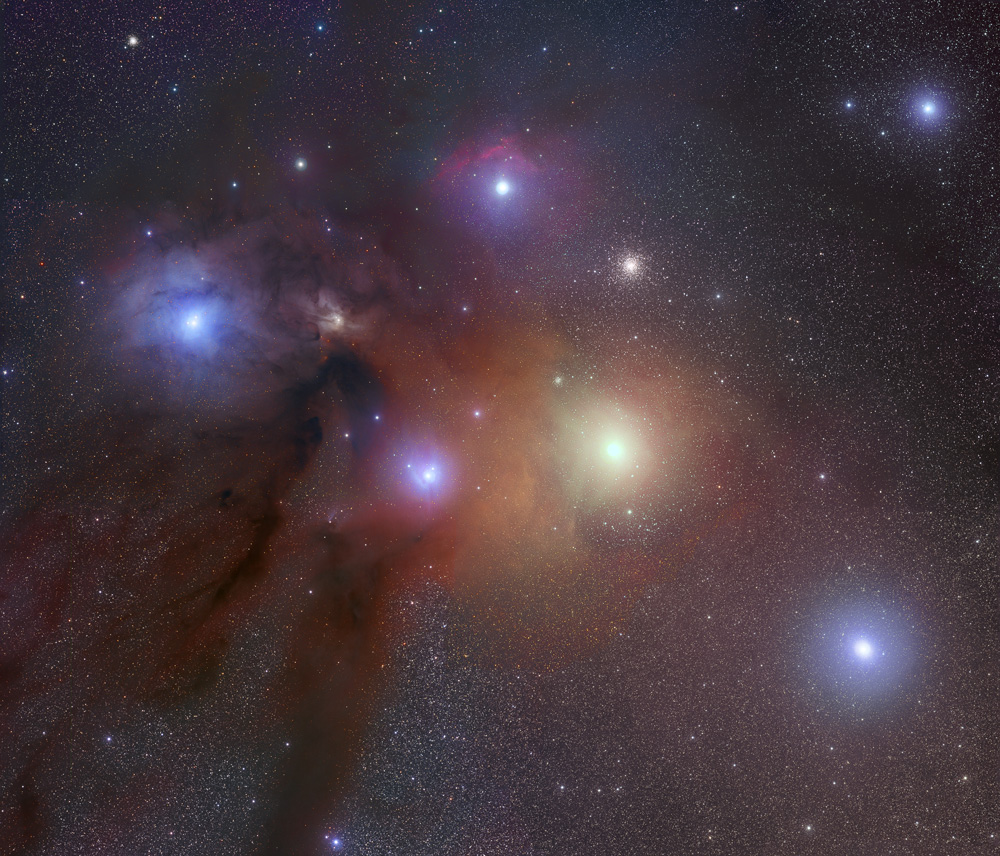

Rho Ophiuchi Region: This is a large molecular cloud around Antares (a magnitude 1 star in Scorpius; the bright yellow star) and Rho Ophiuchi (a magnitude 5 star, in the midst of the blue reflection nebula--IC4604--to the left of the image). There are at least three globular clusters in this frame, highlighted by M4 in the upper right center of the colorful area (there's also one to the upper left of Antares--NGC6144, and one in the upper left corner of the image--M80). There's a very pretty little emission nebula (CED130; the red nebula around Omicron Scorpii, toward the top of the image); another reflection nebula (the smaller blue region to the left of Antares, IC4605); a sublime (to me) reflection nebula just to the right of Rho Ophiuchi called IC4603, with wisps of dust between us and it, and a number of dark nebulae (the extended brown/black streams in the image). This molecular cloud is relatively close (on a galactic scale) to us, at about 500 light years away; this image spans about seven degrees of the sky (horizontally; about ten degrees in the diagonal), which (at the 500 light year distance) translates to about 60 light years across (horizontally); those are big dark nebulae!
Copyright 2012 Mark de Regt